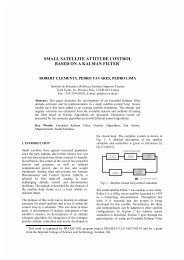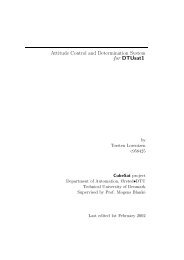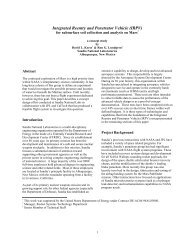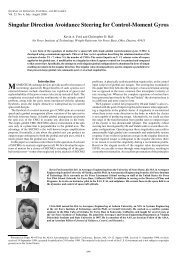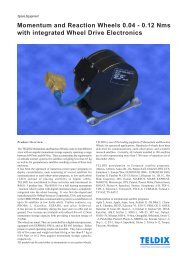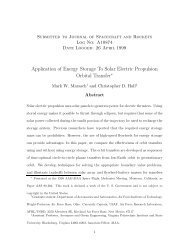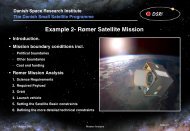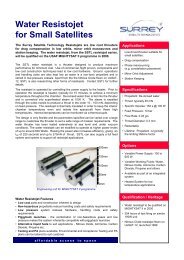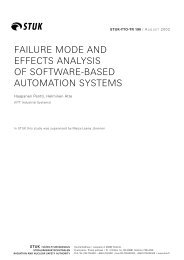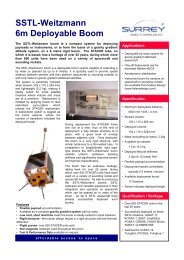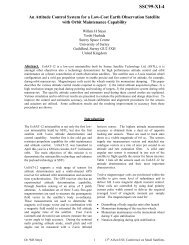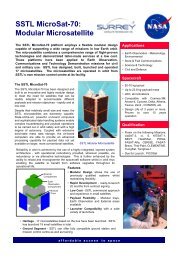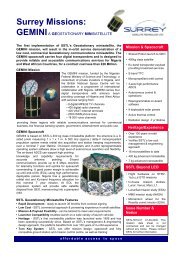Sea Launch User's Guide
Sea Launch User's Guide
Sea Launch User's Guide
You also want an ePaper? Increase the reach of your titles
YUMPU automatically turns print PDFs into web optimized ePapers that Google loves.
Other • A helicopter is provided to support mission operations. Both the ACS<br />
and the launch platform are equipped with landing pads.<br />
• A comprehensive photo-optical recording system is used to document<br />
launches.<br />
• External communications are handled through INTELSAT satellites<br />
and <strong>Sea</strong> <strong>Launch</strong> ground stations in Brewster, WA, and Eik, Norway.<br />
Zenit-3SL flight<br />
operations<br />
Zenit first- and second-stage flight operations are completely automatic.<br />
A mission event timeline is included in section 3, table 3-1 of this user’s<br />
guide.<br />
All Stage 1 and 2 events occur within the view of the ACS. The spent<br />
stages fall in the Pacific Ocean, far short of the coast of South America<br />
and the major coastal shipping lanes. Any deviation of flight trajectory<br />
from preprogrammed limits causes onboard systems to automatically<br />
terminate propulsion and end the mission. This approach to flight safety<br />
has been used successfully for decades by the CIS and obviates the need<br />
for the traditional range safety officer.<br />
At second-stage separation from the Block DM-SL, four solid propellant<br />
rocket motors at the base of Stage 2 fire to back the stage away from the<br />
Block DM-SL. The Block DM-SL lower and middle adapters are<br />
jettisoned during this period, the lower adapter is jettisoned with Stage 2,<br />
and the middle adapter is jettisoned just before Block DM-SL ignition.<br />
Block-DM flight<br />
operations<br />
Before launch, the Block DM-SL onboard systems are turned on and<br />
initialized, its oxidizer tank level is adjusted, and power is transferred<br />
from the LP umbilical to the Block DM-SL internal power supply.<br />
During the Stage 1 and 2 flight, the Block DM-SL remains inactive,<br />
except for preparations for autonomous flight. Following Stage 2<br />
separation, the Block DM-SL is inserted into the target orbit with a single<br />
main engine burn. For two-burn missions, the Block DM-SL performs a<br />
settling burn using the attitude control/ullage propulsion system prior to<br />
the second burn of the main engine. Burn program options include, but<br />
are not limited to, one- or two-impulse insertion GTO and multiple burns<br />
(up to a maximum of five) to medium Earth orbit (MEO) or planetary<br />
escape.<br />
Following spacecraft insertion into the target orbit, the Block DM-SL<br />
separates from the spacecraft and performs a CCAM. Disposal options<br />
include transfer of the Block DM-SL to a higher or lower disposal orbit<br />
that mitigates orbital debris generation risk and reduces the spent stage<br />
orbital lifetime.<br />
8-26 D688-10009-1 REV B



